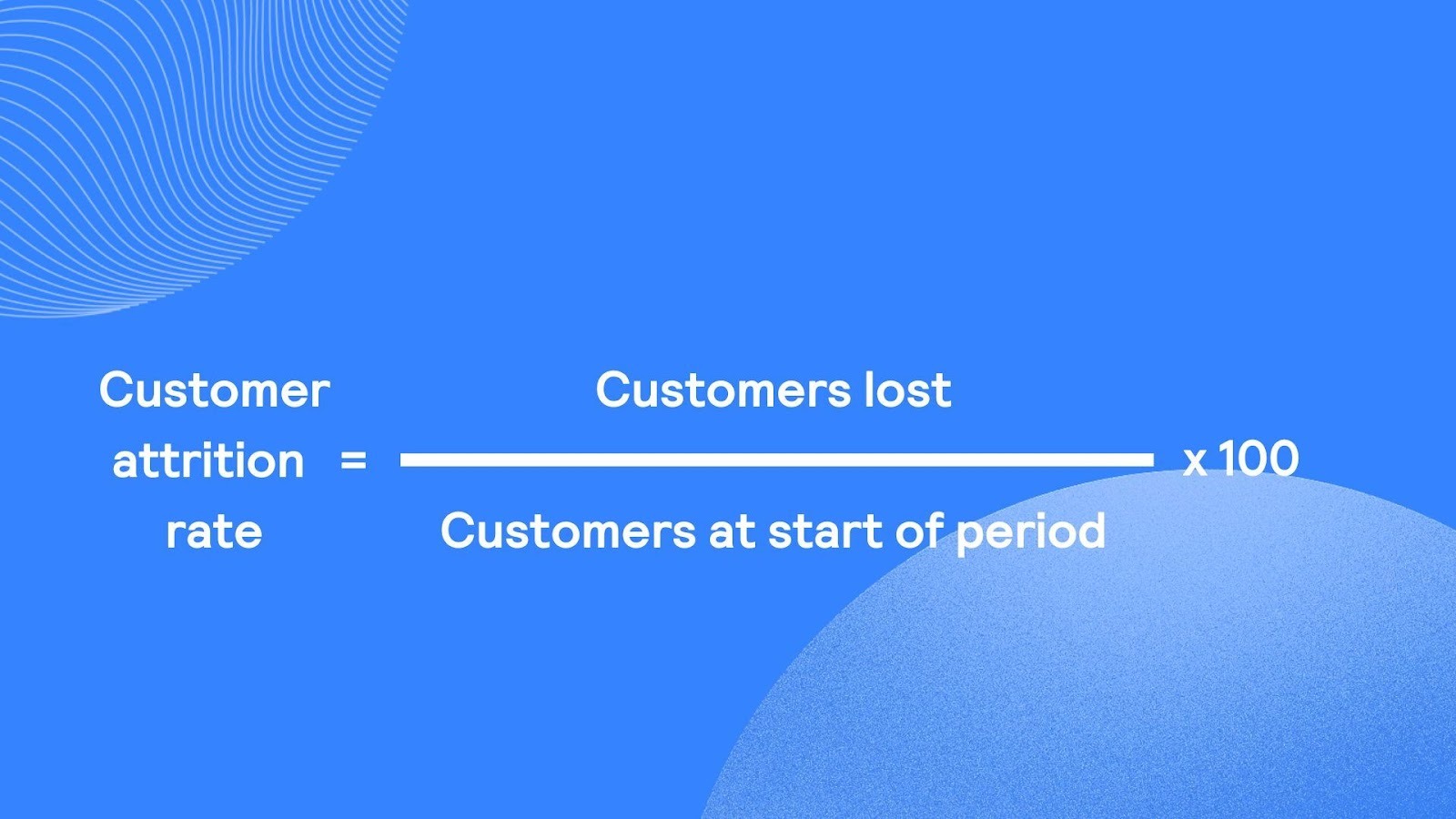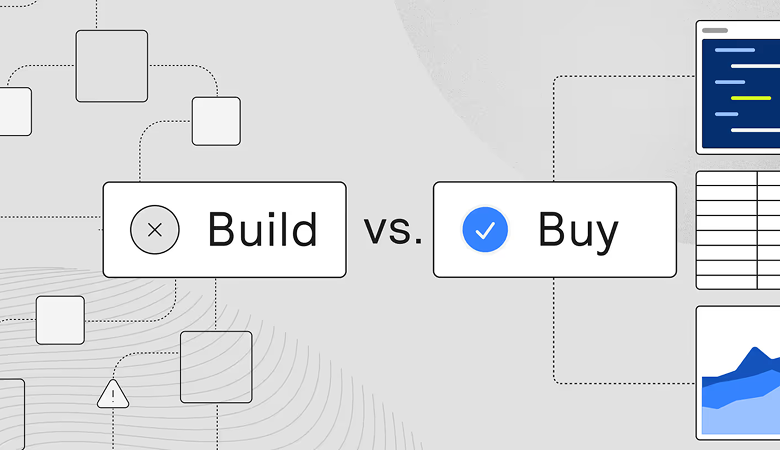Customer attrition is when customers stop doing business with you — and it hugely impacts your growth and profitability. Here's how to calculate your attrition rate and reduce it with smarter pricing, billing, and retention strategies.
What is customer attrition?
Customer attrition is the share of customers who stop doing business with you during a period. You’ll also hear client attrition, customer turnover, or customer defection used for the same idea.
Retail teams often tag customers as churned after a set period of inactivity. Subscription teams see attrition when someone cancels or fails to renew.
Why does customer attrition matter?
Acquisition matters because it can be expensive. Your growth stalls if too many customers leave before you earn back acquisition and onboarding costs. Teams track attrition to spot problems in onboarding, pricing, support, billing, and product-market fit.
Why customers leave
Use these common drivers to structure your investigation:
- Product misalignment: Customers don’t reach their desired outcome. Watch low feature adoption and negative feedback.
- Pricing issues: Price feels out of step with value, or changes land without context. Watch downgrades and “too expensive” exit reasons.
- Onboarding and time-to-value: Slow activation predicts early attrition. Track time to first value.
- Billing friction: Unclear invoices, limited payment methods, or failed payments erode trust and create involuntary churn.
- Low engagement: Declining logins or feature use signals risk.
- Weak perceived ROI: Especially in B2B, customers leave when outcomes aren’t clear.
- Support gaps: Slow, unhelpful support pushes users to competitors.
Most attrition drivers like these trace back to a value perception problem, and pricing and packaging strategies can fix them.
Good monetization design aligns what customers pay with the outcomes they achieve, making every dollar feel justified. Flexible packaging options that allow a pause and hybrid pricing models also reduce involuntary churn.
How do you calculate the customer attrition rate?
You calculate the attrition by dividing the number of customers lost in the period by the number of customers you had at the start. Then multiply the result by 100. Here’s a quick look at the formula:

Example: You begin January with 500 customers and 25 leave by month-end. Attrition rate = 25 ÷ 500 × 100 = 5%. Track monthly for fast feedback and annually to see trends. Don’t multiply a monthly rate by 12; compounding makes that inaccurate.
Tip: Track attrition alongside revenue churn to understand the value you’re losing, not only the count of accounts.
Note: Want the math for churn, too? Read our guide to the churn rate formula.
Annual vs. Monthly attrition tracking
When tracking customer attrition monthly versus annually, the timeframe you consider will naturally impact the rate. A monthly rate provides a more immediate snapshot of customer loss to quickly spot potential issues.
However, monthly fluctuations can sometimes be volatile. An annual rate offers a broader perspective, smoothing out short-term variations and revealing longer-term trends in customer retention.
It's common for SaaS businesses to monitor both monthly and annual rates to gain a holistic view. Keep in mind that simply multiplying a monthly rate by 12 doesn't always give an accurate annual rate due to compounding effects.
Upgrades and downgrades
Finally, it's important to consider the impact of upgrades and downgrades on your attrition metrics. While a customer who downgrades their subscription isn't technically leaving your service entirely, it represents a contraction in revenue.
Conversely, an upgrade increases revenue. Traditional attrition rate calculations typically focus on complete customer loss.
Some companies track metrics like net revenue retention (NRR), which factors in upgrades, downgrades, and churn. This metric shows the overall change in recurring revenue from existing customers.
Remember: A customer completely leaving is still considered attrition, but downgrades signal a potential risk or a change in customer needs that's crucial to monitor.
Note: To connect upgrades, downgrades, and churn into a single revenue view, read our guide to net dollar retention.
Customer attrition vs. Customer churn
People use the words interchangeably. In practice, attrition usually means customers lost, while churn can mean customers lost or recurring revenue lost. Many teams track all three: customer attrition, revenue churn, and retention.
Why the distinction helps: You could lose many low-revenue accounts and still see low revenue churn, or lose a few large accounts and see high revenue churn. Use both views when you plan pricing and success motions.
Note: See how churn relates to retention rate in our quick explainer.
How do you analyze customer attrition?
You analyze customer attrition effectively by first understanding not just the what, but also the why and the who behind it. A thorough customer attrition analysis involves both quantitative and qualitative methods.
Quantitative analysis
This involves looking at hard data to identify patterns and trends. Think:
- Usage drop-offs: Analyze when and where customers stop using your product. A sudden decline in usage of key features can signal dissatisfaction or a lack of perceived value.
- Billing history: Examine billing cycles, payment failures, and downgrades. Frequent payment issues might indicate involuntary churn risks, while downgrades can precede complete attrition.
- Cancellation patterns: Look for common points in the customer lifecycle when cancellations occur. Is there a spike after the initial onboarding period, after a price increase, or before renewal?
Qualitative analysis
This involves gathering insights directly from customers to understand their reasons for leaving.
- Exit surveys: Implement surveys for canceling customers to gather direct feedback on why they decided to leave. Be mindful of response rates and potential biases in self-reported data.
- Customer support data: Analyze support tickets, transcripts, and notes for recurring themes, complaints, or unresolved issues that may have contributed to attrition.
Segmentation
Breaking down your customer base into smaller groups can reveal valuable insights into attrition drivers. Consider segmenting by:
- Customer size: Enterprise clients might churn for different reasons than small businesses or individual users.
- Pricing tier: Attrition rates may vary across different subscription plans, indicating potential issues with value perception at specific price points.
- Lifecycle stage: New customers might churn due to onboarding issues, while long-term customers leaving could signal evolving needs or competitive pressures.
Customer attrition models
Using data to predict and understand churn can help proactively identify and engage at-risk customers.
You can do this through:
- Predictive churn scoring: You can build a customer attrition model that assigns a churn risk score to each customer. Analyze historical data and customer behavior to determine these scores.
- Cohort analysis: Grouping users based on their acquisition date or a shared trait and then tracking their attrition rates over time can reveal trends in customer retention and the impact of changes you've made to your product, pricing, or processes.
Note: Understanding your specific SaaS churn rates and comparing them against relevant SaaS benchmarks is crucial for evaluating the health of your business.
Plus, for companies dealing with larger clients, a strong grasp of enterprise billing nuances can impact user satisfaction and retention. We encourage you to explore our posts on SaaS churn rates, SaaS benchmarks, and enterprise billing for a deeper dive into these related topics.
6 proven strategies to reduce customer attrition
Here are six proven strategies to help you reduce customer attrition:
- Align pricing with customer value: Adopt models that scale with use. Many teams choose hybrid pricing: a base subscription plus usage-based components. Customers pay for what they need, which reduces bill shock and improves fit across segments.
- Improve onboarding and time to value: Shorten “first value.” Use guided setup, templated configs, and human help for high-value accounts. Faster activation correlates with lower early churn.
- Create flexible billing experiences: Offer plan upgrades and downgrades without friction. Provide self-serve pausing for seasonal use. Show current usage in-app and on invoices to improve trust.
- Monitor usage and intervene early: Watch for sudden engagement drops, stalled projects, or contract silence near renewal. Trigger outreach with targeted help or value reminders.
- Prevent involuntary churn with payment recovery: Use smart dunning, in-app prompts, and SMS to update cards and retry payments. Providers report meaningful recovery rates when payment recovery is built in by default.
- Run pricing experiments: Test plan thresholds, bundling, and trial structures. Measure changes in adoption, expansion, and attrition before rolling out broadly.
Note: For a broader retention playbook, read our post on SaaS customer success.
How Orb helps companies lower attrition at scale
Orb is the billing platform that equips you to design and operate pricing systems that evolve with your product. Here’s how teams use Orb to cut attrition tied to pricing and billing:
- Define billing metrics without engineering. Orb ingests raw usage events so you can define your own billable metrics. Use Orb SQL Editor or a visual editor to do so without engineering.
- Price with confidence. Orb Simulations uses your historical data to simulate how different pricing models affect your revenue. Run scenarios to preview revenue and usage outcomes before launch so finance and product can make more informed decisions together.
- Accuracy at scale. Orb ingests and tracks every raw event at scale and with high accuracy. Get a full audit trail for every invoice.
- Decouple data from pricing. With Orb RevGraph, usage data is decoupled from pricing logic, so invoices remain accurate and up to date as you iterate on plans.
- Fewer billing surprises. Even as you evolve your pricing, invoices are automatically recalculated in order to remain accurate.
- Launch faster. With Orb, you can evolve your pricing without rewriting code.
Ready to transform your billing from a back-office function into an asset for customer retention? Explore Orb and our flexible pricing options to find a plan that works for you.

.avif)

